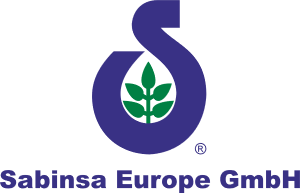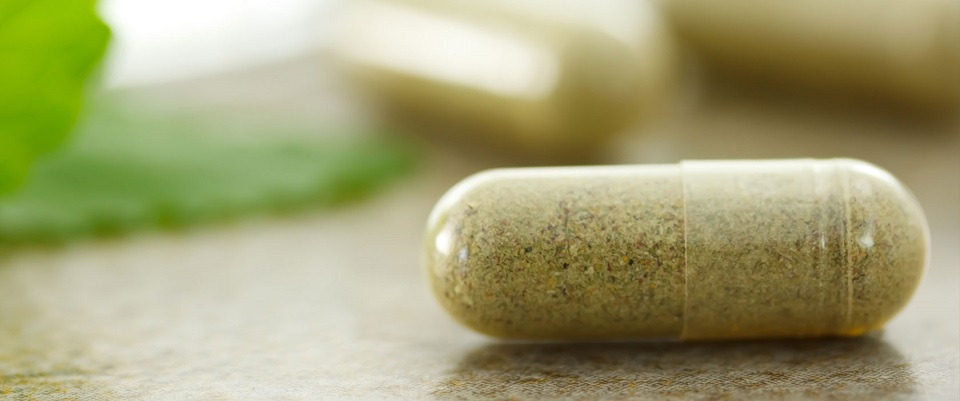Sabinsa Corporation is proud to announce that ForsLean®, our unique product for promoting lean body mass, is now available to dietary supplement manufacturers.
Introduction
ForsLean® is an extract prepared from Coleus forskohlii roots and standardized for a minimum of 10% forskolin. It is a registered trademark and patented product of Sabinsa Corporation.
Cultivation
Careful cultivation is essential for optimizing the quality of root material for forskolin content. Critical factors that affect the growth and yield of C. forskohlii include climate and soil requirements. C. forskohlii is a species native to subtropical and warm, temperate habitats, and it grows well in loamy or sandy-loam soil which has a pH of 6.4 to 7.9. Approximately, 1-500 g of root material can be obtained from a single plant, and the forskolin content of the roots varies from 0.07-0.58% on a dried basis.4
C. forskohlii is not a ubiquitous botanical. Thus, resources are limited. In order to insure the availability of C. forskohlii, Sabinsa Corporation has undertaken a massive cultivation project. As shown in the pictures below, Sabinsa tends to the optimum growth, collection, and standardization of C. forskohlii from seed planting to root collection, and finally to the preparation of the standardized extract, Forslean®.
Phytochemistry

Forskolin (7b-acetoxy-8,13-epoxy-1a,6b,9a-trihydroxylabd-14-en-11-one), a diterpene compound, is a major biologically active component of Coleus forskohlii roots. In nature, forskolin has only been found in the roots of the Coleus forskohlii plant. Minor diterpenoids, deacetylforskolin, 9-deoxyforskolin, 1,9-deoxyforskolin, 1,9-dideoxy-7-deacetylforskolin, and four other diterpenoids, have also been reported to be present in the roots of Coleus forskohlii.5-6
Health Benefits

Forskolin has mutifaceted pharmacological effects that have been linked to its role as an activator of adenylate cyclase.3 Adenylate cyclase is the enzyme involved in the production of cyclic adenosine monophosphate (cAMP), a significant biochemical agent involved in essential metabolic processes. Cyclic AMP is called the "second messenger" because it facilitates the action of "primary messengers", various hormonal and bioactive substances in the body. Based on its pharmacological actions, forskolin appears to be well indicated in conditions, such as eczema (atopic dermatitis), asthma, psoriasis, cardiovascular disorders, and hypertension, where decreased intracellular cAMP levels is believed to be a major factor in the development of the disease process.
In promoting weight management, forskolin induces a chain of biochemical events that trigger the metabolic processes and diet-induced thermogenesis8, thereby providing the means to maintain a healthy body composition and lean body mass levels.
ForsLean®: Lean Body Mass Studies
Maintaining lean body mass is essential for good health. The percentage of lean body mass to fat not only determines the body’s aesthetic look, but more importantly, it determines a person’s physical fitness, health status and risk for morbidity (disease) and premature mortality (death). For example, abdominal fat is a significant risk factor for cardiovascular disease. Exercise that results in increased lean body mass may have a positive impact on long-term cardiovascular risk and life span. Including ForsLean® as part of an exercise program may further enhance the health benefits that come from increasing lean body mass.

Effects of ForsLean® on body weight, body fat and lean body mass.

Effects of ForsLean® on blood pressure and pulse rate
Sabinsa Corporation conducted 2 preliminary, clinical studies that evaluated the effect of ForsLean® on the body mass composition of overweight individuals. In the first study ForsLean® was orally administered to 4 overweight female volunteers for 12 weeks. Each volunteer received one capsule, which contained 250 mg of C. forskohlii extract (equivalent to 25 mg forskolin), twice daily. Each participant was informed about healthy eating and the benefits of regular exercise, and they were seen by a physician at the inception of the study and after 4, 8, and 12 weeks. The results showed that mean lean body mass significantly increased by 7.2 pounds from week 0 to week 12. Although not significant, percent body fat was reduced by 2.9% from week 0 to 12. No significant differences were observed in blood biochemistry or vital signs (e.g. pulse rate, systolic blood pressure values, and appetite and energy levels).
In the second clinical study, 6 overweight female volunteers received the ForsLean® formula twice daily (equivalent to 50 mg forskolin per day) for 8 weeks. Physical activity, vital signs, and body weight and body mass parameters were monitored during the course of the experiment.
During the eight week trial, the mean values for body weight and fat content significantly decreased, whereas lean body mass significantly increased compared to baseline values (Figure 1). The regimen did not adversely affect the systolic/diastolic blood pressure nor the pulse rate. In fact, a trend towards lower systolic/diastolic pressure was observed during the study (Figure 2).
The 50 mg forskolin per day dosage administered in the two preliminary, clinical studies, did not cause any untoward or adverse side effects in the patients. As a follow-up to these two preliminary studies, two additional clinical studies using ForsLean® are currently underway in the U.S. and Japan.
ForsLean® is the only brand of C. forskohlii that has been independently tested for safety and toxicity. An oral toxicity and a mutagenicity assay were conducted on ForsLean® by two independent laboratories. The oral LD50 of ForsLean®is greater than 2000 mg/kg (test conducted in Wistar albino rats). In addition, the results of the Bacterial Reverse Mutation Assay with an Independent Repeat Assay indicated that ForsLean®did not cause a positive response in the presence and absence of Aroclor-induced rat liver S9.
Ephedrine vs. ForsLean®
ForsLean® acts by a simpler, yet a different mechanism of action than ephedrine (a known weight loss supplement). As a result, some of side effects (e.g. cardiovascular etc...) experienced with ephedrine are not observed with forskolin. A detailed comparison of ForsLean® and ephedrine may be assessed.

U.S. Patent #5,804,596
Because Sabinsa Corporation discovered the promotion of lean body mass, fat loss, and the weight loss properties of forskolin, the U.S. Patent and Trademark office granted U.S. Patent #5,804,596 (September 8, 1998) exclusively to Sabinsa. U.S. Patent #5,804,596 is defined as "…a method of preparing a forskolin composition…and use of forskolin for promoting lean body mass and treating mood disorders". Although the patent includes forskolin compositions ranging from 1 to 40%, the most preferred composition contains 10% forskolin. ForsLean® is the only Coleus forskohlii preparation supported by a patent for its weight management benefits.
Companies or individuals using any Coleus forskohlii preparation other than ForsLean® in their respective product formulations, which suggest, imply or represent their products to promote lean body mass, fat loss and weight loss would be infringing on Sabinsa’s use patent for forskolin.
ForsLean®: Trademark & Patent Licensing Agreement
ForsLean® is now available to dietary supplement manufacturers because Sabinsa’s exclusive licensing agreement with a leading dietary supplement manufacturer has recently expired. Now Sabinsa offers interested manufacturers a new non-exclusive trademark and patent licensing agreement through our Preferred Customer Program. This agreement grants the customer the right to use the ForsLean® trademark and logo, patent claims and number, research data, advertising slogans, and other ForsLean®-related information, which are proprietary to Sabinsa, by agreeing to the provisions set forth in the agreement. The specifics of the ForsLean®Trademark & Patent Licensing Agreement can be obtained by contacting Sabinsa’s customer service departments in New Jersey (732-777-1111) or Utah (801-465-8400).
References
- Bruneton, J. (1995) Coleus forskohlii in Pharmacognosy, Phytochemistry, Medicinal Plants. Lavoisier Publishing Co. (France), 521.
- de Souza, N. (1991) Coleus forskohlii Briq- The Indian plant source for forskolin. Recent Advances in Medicinal, Aromatic & Spice Crops. (ed. S.P. Raychaudhuri) Today and Tomorrow’s Printers & Publishers (India), vol. I, 83-91.
- Ammon, H. and Müller, A. (1985) Planta Medica 6, 473-477.
- Shah, V. and Kalakoti, B. "Development of Coleus forskohlii as a medicinal crop." Proceedings of the International Conference on Domestication and Commercialization of Non-Timber Forest Products in Agroforestry Systems. Hosted by ICRAF, held in Nairobi, Kenya from Feb. 19-23, 1996.
- ]Tandon, J. et al. (1977) Ind. J. Chem. 15B, 880-883.
- Gabetta, B. et al. (1989) Phytochemistry 28, 859-862.
- Rupp, R. (1995) Forskolin: Its chemical, biological and medical potential. Proc. Of the International Symposium. Hoechst India Ltd.
- Palou, A. et al. Int. J. Biochem. Cell. Bio. 30, 7-11.







